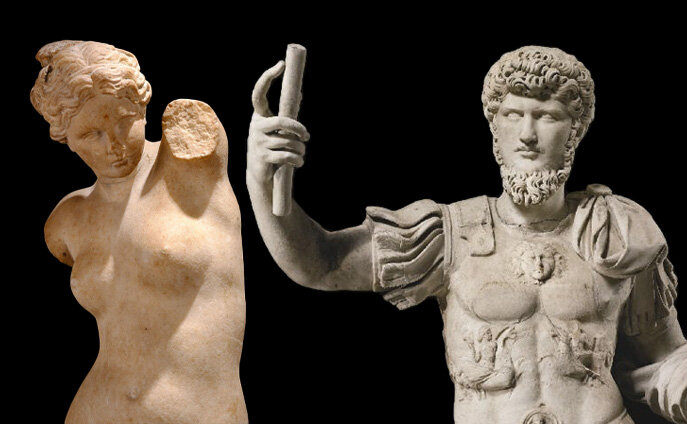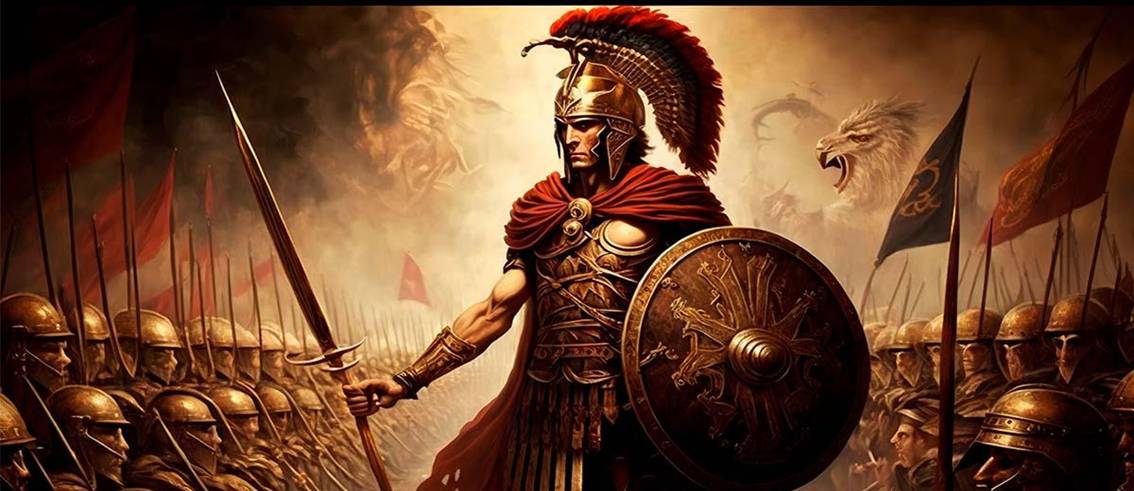The Hellenistic and Roman periods
The Hellenistic and Roman periods stand as transformative eras in the ancient world. Spanning from the death of Alexander the Great in 323 BCE to the fall of the Roman Empire in 476 CE, these periods brought significant cultural, political, and social changes that shaped Western civilization. This essay examines the defining characteristics of the Hellenistic and Roman periods, focusing on their contributions to art, philosophy, governance, and their enduring legacy.
The Hellenistic Period (323–31 BCE)
1. Historical Context
Alexander the Great’s death in 323 BCE triggered the fragmentation of his vast empire among his generals, the Diadochi. This division created a cosmopolitan world where Greek culture blended with local traditions across the Eastern Mediterranean, the Near East, and parts of Asia.
During this era, three major political powers emerged: the Ptolemaic Kingdom in Egypt, the Seleucid Empire in the Near East, and the Antigonid dynasty in Macedonia. Each kingdom fostered vibrant cultural and intellectual growth, making the Hellenistic period one of history’s most dynamic eras.
2. Cultural and Intellectual Achievements
The Hellenistic period produced remarkable advancements in culture and intellect. Alexandria in Egypt became the epicentre of Hellenistic culture, housing the famed Library of Alexandria and the Museum, a hub of learning and research.
Philosophy: Thinkers such as Epicurus and Zeno of Citium introduced new frameworks for understanding human existence. Epicurus promoted the pursuit of pleasure and tranquillity, while Zeno, founder of Stoicism, emphasized rationality, self-control, and virtue.
Science and Mathematics: Scholars like Euclid revolutionized geometry, while Archimedes advanced mechanics and hydrostatics. Aristarchus of Samos proposed a heliocentric model of the solar system, foreshadowing later scientific discoveries.

Art and Architecture: Hellenistic art embraced realism and emotional expression, producing masterpieces like the Laocoön Group and the Venus de Milo. Architects widely adopted the Corinthian order, evident in structures like the Temple of Olympian Zeus in Athens.
3. Political and Social Developments
Greek political ideas influenced governance across the Hellenistic monarchies, where rulers often portrayed themselves as divine or semi-divine figures.
The blending of cultures, known as Hellenization, defined this period. Greek became the common language of the Eastern Mediterranean, facilitating trade and the exchange of ideas. Despite this cultural fusion, tensions arose as local populations resisted Greek customs and governance.
The Roman Period (31 BCE–476 CE)
1. Historical Context
Octavian’s victory over Mark Antony and Cleopatra at the Battle of Actium in 31 BCE ended the Hellenistic era and initiated the Roman Empire. The empire expanded to encompass the entire Mediterranean and beyond, creating one of history’s most extensive and enduring domains.

Roman history divides into the Principate (27 BCE–284 CE), when emperors maintained a republican facade, and the Dominate (284–476 CE), when rulers exercised more autocratic power. Emperors like Trajan and Hadrian oversaw the empire’s peak, but internal and external challenges eventually led to the fall of the Western Roman Empire.
2. Cultural and Intellectual Achievements
Roman culture, while deeply influenced by Greek traditions, introduced significant innovations.
Law and Governance: Romans established a legal system grounded in justice, equality before the law, and citizens’ rights. This legal framework became a cornerstone for modern legal systems worldwide.
Engineering and Architecture: Roman engineers achieved monumental feats such as aqueducts, roads, and iconic structures like the Colosseum and the Pantheon. Innovations like concrete enabled grand designs, including arches, vaults, and domes.
Literature and Philosophy: Latin literature thrived with works by poets such as Virgil, Horace, and Ovid, alongside historians like Livy and Tacitus. Roman philosophers like Seneca and Marcus Aurelius, influenced by Stoicism, enriched the empire’s intellectual landscape.
3. Political and Social Developments
The Roman Empire maintained a hierarchical society with distinct classes, including patricians, plebeians, and slaves. The empire integrated conquered peoples through Romanization, spreading Latin language, culture, and law across provinces.
Wealth and diversity from expansion created social tensions and economic disparities. Over time, external pressures from Germanic tribes and the Huns, along with internal struggles, destabilized the empire. The division of the empire into Eastern and Western halves in 285 CE and the fall of the Western Roman Empire in 476 CE marked the transition from the ancient world to the middle Ages.
Conclusion
The Hellenistic and Roman periods profoundly influenced Western civilization. The Hellenistic era spread Greek culture and merged it with Eastern traditions, fostering advancements in art, science, and philosophy. The Roman period built upon this foundation, contributing significantly to law, governance, architecture, and literature.
Today, the legacy of these transformative eras endures in legal systems, languages, and cultural practices worldwide. The fusion of Greek and Roman ideas shaped Western civilization’s foundations, leaving an indelible mark on the modern world.


